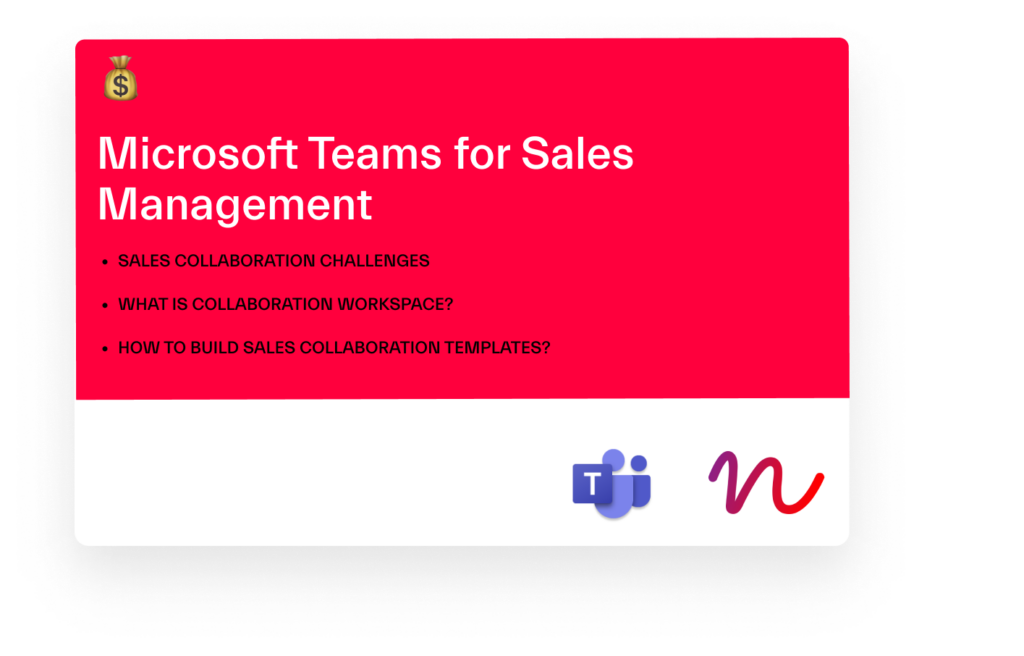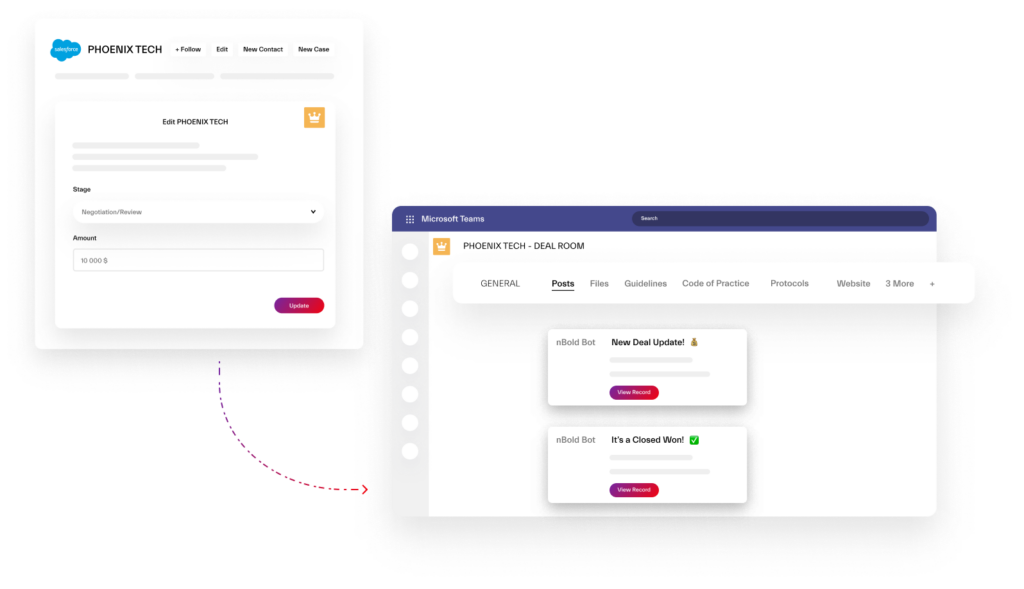Every sales manager wants to ensure success for individual reps and the team. This drive also involves the introduction of new techniques and tactics to empower their people.
Collaboration is a powerful tool for business owners no matter what sized organization they run. The connections you form with others help you grow your business in the long run so you can deliver better results to clients at an individual level.
In this post, we’ll talk about what collaborative selling is, how it works, why it is beneficial to your sales team, and how to get started with your collaborating efforts.

What is collaborative selling?
The concept of collaborative selling has been around for years. The chances are that you’ve been employing this method in your business strategy already. However, this time, you collaborate with the client.
In other words, collaborative selling occurs between the salesperson and the client— not between members of the sales team. The two parties can find the best solutions for the individual client by working together.
For some years, business owners have known that they cannot set themselves apart from the best only based on their products and services. This realization has led to the branching of sales into various types of selling. Thus, we can say that there are five types of selling:
- Transactional selling
- Consultative selling
- Solution selling
- Provocative selling
- Collaborative selling
These methods allow for a unique approach to the sales process.
How does it work?
A salesperson can’t mature a lead all by themselves. The customer has to be involved in this process too. They are the ones responsible for deciding on the sale.
Collaborative selling works primarily by recognizing the client’s active and decisive role in the sales process.
So, for collaborative selling to work, there need to be two parties: the salesperson and the client. The customer needs to have an active say in the sales process to give them all the data and insight needed to make an informed decision.
It works because your company’s salesperson collaborates with the lead or customer to find the best possible solution for them. This way, the salesperson can use their knowledge to gauge what kind of product would work best for the client. The client, in turn, can lend their insights or experiences to your sales team member.
Suppose you run a real estate firm. Through your marketing efforts, you land a high-value lead interested in dealing with you. Your real estate agent then gets in touch with this lead and talks to them about their budget, the kind of installment plan they’re looking for, and even the type of location they would like to invest in. With this information, the agent can embark on their journey to finding the client their perfect piece of land.

Why is collaborative selling beneficial?
While customer service is at the forefront of collaborative selling, its benefits extend beyond finding the right solution for an individual client. In fact, according to research conducted by Garner, 89% of buyers believe that a significant reason they go through with the sale is thanks to gaining “high quality” assistance and information during the sale process.
Keep reading to learn how collaborative selling drives your business forward.
Collaboration helps you grow your network
All successful business owners know that networking is half the battle. Scaling your business requires you to hone professional relationships constantly. Failure to do so can eventually isolate you from potential allies and stakeholders.
Keep in mind that not every contact is able or willing to collaborate with you. However, every time you reach out to someone, you explore that possibility. Moreover, you are expanding your network— which could always help spread the word about your business and its service.
Collaborative selling can be educational
Perhaps the most significant benefit of collaborative selling is an excellent opportunity to learn. Every interaction with someone outside of your immediate circle imparts new knowledge. It gives you an idea of the market’s trajectory and how to better interact with different clients.
Think of it, some of the best collaborations have taken place when two people from very different backgrounds come together. This brings a new set of skills, insights, and strengths to the table. When this happens, you’re bound to come across opportunities to learn new things.
Collaboration solves problems
Collaborative selling helps you understand the clients’ needs clearly and leave little to no room for doubt. As opposed to this, if the salesperson was working solo, they might propose a solution that’s unsatisfactory to the client.
Another way it can solve problems is through crowdsourcing. There’s strength in numbers. If one of your salespeople can’t quite get the job done, other people might be able to do so. Think about the times when you faced trouble with your business. When we hit a roadblock, we turn to others we think could help us out.
These people could be mentors, partners, or others whose judgment we trust. So, the more complex the problem is, the more pertinent it is to ask for assistance.
Getting started with the collaborative selling process
It would be best to consider a few things before starting your collaborative selling process. We encourage you to ask yourself three questions before starting to maximize your efforts.
Can the parties easily collaborate?
If the collaboration between the sales team and the clients is streamlined, the client can ultimately make smarter, data-driven decisions. Working closely means quicker solutions to problems.
When your sales team is armed with the data and tools needed to communicate and assist their clients well, they can perform consistently and effectively. One of the tools that can help keep all the parties on the same page is Microsoft Teams.
You can learn more about how to use Microsoft Teams for sales management here.

Learn how to implement collaborative selling in Microsoft Teams
- How to use Teams for Sales Management
- The list of apps for Sales Management
- How to build Sales Management Teams Templates
Are all your departments connected?
Having your marketing and sales teams aligned makes a world of difference in maturing leads and closing deals. However, one thing many seem to forget is the service team. Today, businesses are placing more and more focus on customer success strategies. For this, it’s necessary to bring the service team into the mix.
Thus, these three teams must collaborate to provide the customers with the best of the best across all touchpoints. In fact, a study reported that nearly 75% of customers look for a consistent experience every time they interact with a business.
This means that the company needs to provide a seamless and familiar experience to its customers irrespective of whether they’re interacting on the website, on social media, or in person.
Do all your teams share the same metrics?
An important part of having all your teams on the same page is having them all share the same metrics and data. This is a common issue that many businesses face— they’re disconnected at the most basic level.
If you look at it, a steady line can be drawn from marketing’s efforts to gain leads to sales that are measured by quantities being sold and then the follow-up provided by the customer service— these can be in the form of feedback and resolving issues.
More brands recognize the importance of customer experience measurements and prioritize them across the board.
We recommend aligning your departments and sharing their performance metrics. This way, collaborative selling becomes a more natural fit, and all your teams operate with a singular goal in mind.
There are a lot of different platforms you can conduct this on— one of these being Sales Deal Room template in Microsoft Teams by nBold. It’s a collaboration workspace where all your sales processes can collide and take place. So, you can use the template to create a team with all the information needed to start collaborating whenever a new deal is open.

If you choose to set a trigger, the Sales Deal Room team will appear automatically with all the required channels, task boards, content, and other data added to the template. You can also connect your CRM to it. So, your entire team will be notified whenever a new activity takes place on the platform. Users get access to structure, governance and content pre-defined at the template level and they can replicate these resources as many times as needed. Our templates empower teams to make the most of Microsoft Teams.
Final thoughts
Today’s customer service is different from what it was a couple of decades back. These days, clients want and expect more out of their hiring company. Companies cannot rely on sales alone to close deals to meet their expectations. They must stay in constant touch with the client and collaborate with them every step of the way.
If you’re looking for a way to streamline your communication with the client, check out nBold’s collaboration process. We offer solutions for project, crisis, and account management. Perhaps the best part about partnering with us is our Deal Rooms in Teams. You can leverage the template created each time a deal is created.
This appears automatically with all the required channels, task boards, content, and other data added to the template. Thus, there is no need to create a template from scratch— Sales Deal Rooms have your back.
